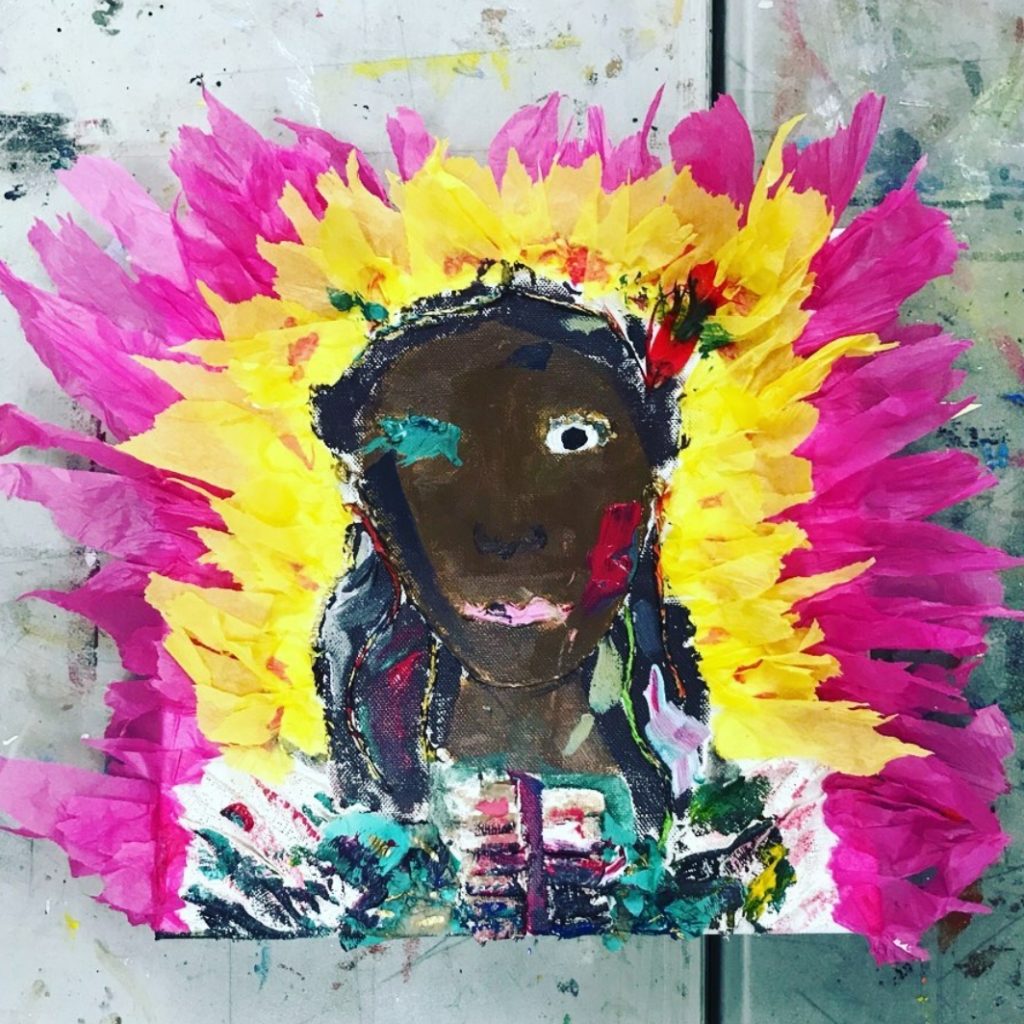Home Art Fun Series
WHO AM I? a mixed media self portrait
Experiment with a mixed media self-portrait project using a variety of materials to express yourself.
explore your imagination
Have fun with this mixed media self-portrait project. Use your imagination, a variety of
materials, as well as text, imagery and photography. By combining a layering effect and
introducing photography and a form of journaling to art making, you can truly engage your
imagination in a more sensory way.
Don’t be afraid to make bold choices and add personal items to your work. Remember there are no mistakes in art!
How does an artist interpret the self?
WHAT YOU'LL NEED
- 1 canvas, canvas board or Cartridge Paper
- Letter size paper or a sketch pad
- Paints that you have - Acrylic or Watercolour Paints
- Brushes
- Palette tray or paper plate
- Water containers to wash brushes
- Coloured permanent markers, oil pastels and/or wax crayons
- Pencils
- Glue Stick or white glue
- Old Magazines, printed out words, written words etc.
- Textured papers and/or specialty papers/foil (optional)
- Photographs that you have permission to use or printed photos (optional)
- Music that best represents you (optional)
WHAT to do
STEP ONE
Start out by researching the history of portraits.
Check out this great resource:
EXPLORE NOW

